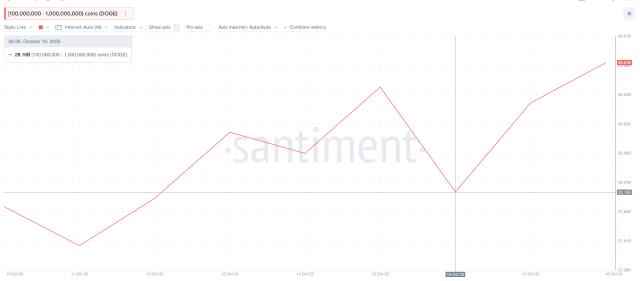
US regional banks are stressed again, raising liquidation risks; many perspectives suggest that Bitcoin could benefit if the Fed is forced to pump money.
Jack Mallers (Strike) commented that Bitcoin is reacting early to liquidation fluctuations. However, the price fell to a 4-month Dip before recovering slightly, showing that the risk of volatility is still large and the outcome depends on the policy response.
- New pressure on US regional banks linked to corporate bad debt and confidence not recovering after 2023.
- Jack Mallers and Arthur Hayes argue that when liquidation is squeezed, Bitcoin often reacts early and could benefit if the Fed injects money.
- Bitcoin fell to $103,850 before rebounding to $107,000, reiterating the risk of strong volatility before there is a clear policy signal.
Why is US regional banking stressed again?
Tensions are back over bad debts with corporate customers and confidence has not recovered since 2023. The Associated Press noted that Wall Street is worried after debt write-offs, while shares of Zions Bank and Western Alliance plunged due to lending problems.
After the March 2023 crisis, support and consolidation policies provide immediate relief but pose moral hazards. According to the Kobeissi Letter, the system still relies heavily on implicit guarantees rather than fundamental improvements, making each credit shock likely to fuel concerns. Source: Associated Press; Kobeissi Letter.
Is the 2023 crisis really over or just a cover-up?
There are signs that the problem is being “covered up” rather than addressed. The focus is on liquidation support, mergers, and bailout expectations, rather than a rapid recovery of asset quality.
The 2023 crisis saw interventions such as the Fed’s Bank Term Financing Facility (BTFP) to provide temporary liquidation to banks, alongside a $250,000 FDIC insurance limit per depositor, per bank. These measures helped cool the fever, but did not immediately change the risk profile. Source: Federal Reserve (2023); FDIC.
What do current liquidation pressures mean for Fed policy?
According to Jack Mallers, if tensions escalate, the almost inevitable response is a liquidation injection, which could push Bitcoin prices higher.
History shows that the Fed often opens the liquidation taps when systemic risk increases. In 2023, the Fed created BTFP to relieve pressure on bonds that were losing value on bank balance sheets. As yields fluctuated and credit spreads widened, expectations of easing increased, which in turn affected liquidation -sensitive assets like Bitcoin. Source: Federal Reserve (2023).
“Yields are vomiting, spreads are exploding, and banks are stressed. Bitcoin is doing the right thing. It smells trouble. When they have to print money, it will go ahead and outperform everything.”
– Jack Mallers, CEO Strike, 2025, source: X (https://x.com/jackmallers/status/1979282439488049613)
Why is Bitcoin considered the most sensitive to liquidation?
Mallers argues that Bitcoin reacts early to liquidation cycles, so it often “gets ahead” when pump expectations increase.
The basis of this thesis: Bitcoin trades 24/7, has high expected elasticity, and has growing institutional market penetration, allowing it to react quickly to macro changes. In previous easing cycles, risk assets often led the wave. According to Mallers, Bitcoin also Vai as a “truth machine” measuring liquidation sentiment. Source: Jack Mallers, X.
How has Bitcoin price reacted during this period of tension?
Despite the bullish argument, the short-term price reaction has been inconsistent: Bitcoin fell to a four-month Dip of $103,850 before recovering to $107,000, still more than 15% below its all-time high.
This development highlights high volatility: as systemic risk increases, investors tend to reduce overall market risk before repositioning. Arthur Hayes argues that if regional banking turmoil escalates into a crisis and leads to a 2023-style bailout, new money could flow back into liquidation sensitive assets like Bitcoin. Source: Arthur Hayes, X.
“BTC is bearish. If the US regional banking wobble swells into a crisis, get ready for a 2023-style bailout. And then buy, if you have spare Capital .”
– Arthur Hayes, Co-founder of BitMEX, 2025, source: X (https://x.com/cryptohayes/status/1979175306653999171)
What does the sharp drop in regional bank stocks like Zions and Western Alliance say?
It is a sign of unrecovered confidence and concerns about bad corporate debt. AP said the move is spreading to broader market sentiment.
As regional bank stocks tumble, Capital costs rise and lending capacity is squeezed, increasing rather than decreasing liquidation risk. Amid widening credit spreads, the credit channel for small and medium-sized enterprises is being impacted, which could drag down growth if not stabilized soon. Source: Associated Press.
How will moral hazard after 2023 affect banking behavior?
The original article argued that bailouts and mergers create a “protected” mentality, encouraging excessive risk-taking.
When implicit guarantees are expected, some banks may maintain suboptimal maturity structures and risk profiles rather than rebalancing aggressively. This makes the system more susceptible to interest rate shocks and new bad debts. Source: Analysis in original; Kobeissi Letter.
What could trigger a new round of liquidation injection?
Signals include: withdrawal pressure, rising unrealized losses on bonds, widening credit spreads and greater risk of institutional contagion.
If these conditions are combined with monetary funding stress, authorities could use special liquidation tools (similar to BTFP 2023) or lower tightening expectations. In this case, liquidation sensitive assets could recover sooner. However, the size and conditions of the program will determine the extent of the impact. Source: Federal Reserve (precedent 2023).
What risks should investors be aware of when positioning with Bitcoin in this context?
Risk of extreme volatility, depending on macro headlines and policy trajectory. Prices may move sharply before the long-term direction is clear.
In addition, the projection of liquidation injection is a scenario, not a necessity. If banking risks are contained, risk appetite may not increase strongly. Risk management, monitoring of policy signals and interbank liquidation are of utmost importance. Source: Analysis based on price movements and policy response history.
What are the indicators to monitor to assess system stress?
Indicators include: Treasury yields, credit spreads, regional bank stocks, money market fund Capital and Fed policy communications.
When yields fall dramatically and credit spreads widen, it is often a sign that markets are pricing in increased risk. Pressure on regional bank stocks and safe-haven flows reveal fragility. Watch press conferences, minutes and the Fed’s emergency lending facility for clues on the next move. Source: Markets compendium; Federal Reserve.
Frequently Asked Questions
Why US Regional Banking Stress Could Impact Bitcoin?
Bitcoin is sensitive to liquidation cycles. If tensions force authorities to pump money, the expectation of increased liquidation could support risk assets like Bitcoin. This view was emphasized by Jack Mallers and Arthur Hayes, source: X.
How has Bitcoin price fluctuated during this period?
Bitcoin fell to $103,850 before rebounding to $107,000, still more than 15% below its all-time high. The move signals high volatility ahead of a clear policy signal. Source: original content.
What is BTFP and how is it related to the 2023 crisis?
BTFP is a 2023 Fed program to provide term liquidation to banks to help handle pressure on bond values. This is a precedent for liquidation injection tools when systemic risks arise. Source: Federal Reserve, 2023.
How much does the FDIC insure deposits?
The standard limit is $250,000 per depositor, per bank, per ownership category. Details are published by the FDIC. Source: FDIC.
What indicators should be monitored to identify spreading risks?
Treasury yields, credit spreads, regional bank stocks, money market fund Capital , and the Fed's policy message are key indicators. Source: market aggregate and Federal Reserve.






